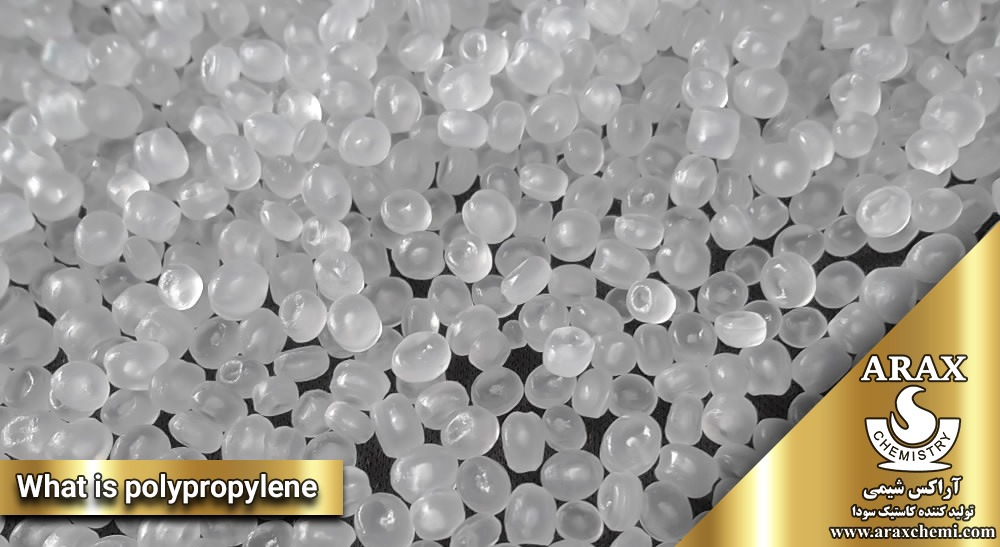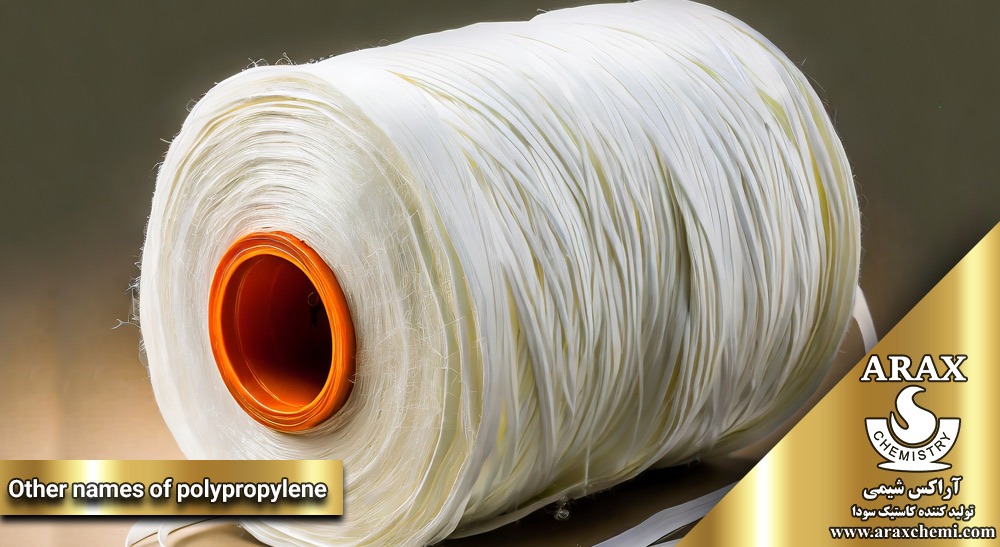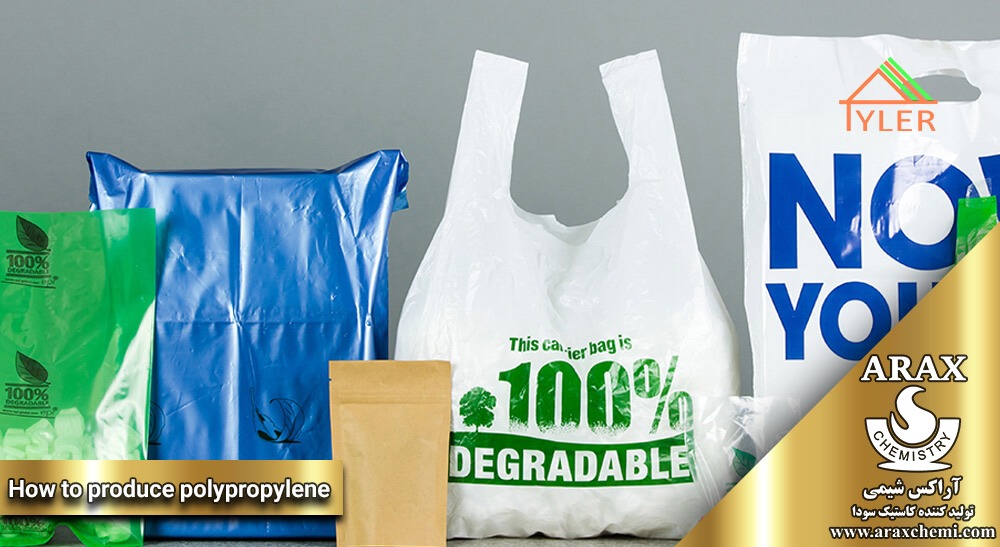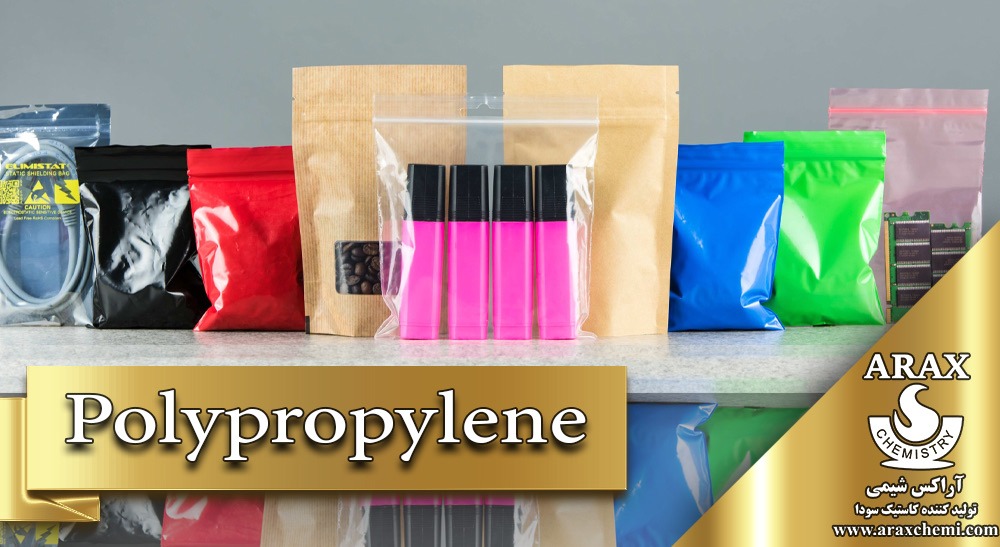Polypropylene is a structural polymer that consists of multiple propylene units. Polypropylene is a plastic material that belongs to the family of polyolefin polymers. Polypropylene is known as one of the most widely used and important plastics in various industries such as packaging, automotive, electronics, clothing and construction.
What is polypropylene?
PP is one of the plastics of polyolefin polymers. This plastic material is made of repeating units of propylene. Propylene is a monomer (a molecule made of repeating units) that contains three carbon atoms and six hydrogen atoms. Polypropilen is one of the most widely used and important plastics in various industries. Due to its unique characteristics, high mechanical strength, chemical resistance, thermal stability, lightness, and recyclability, this plastic is used in various industries such as packaging, automobile manufacturing, electronics, household appliances, furniture, sanitary ware, sports equipment, and food containers. .
Polypropylene is known as a light and hard plastic material and can withstand high temperatures. Also, this plastic has good resistance to impact, bending and stretching. Also, propylene has good resistance to oxidation, acids, bases and organic solvents.

The ability to recycle polypropylene is also one of its important features. This plastic has multiple recycling capabilities, which reduces plastic waste and improves environmental sustainability. In general, propylene is widely used in various industries due to its various characteristics, which include mechanical resistance, chemical resistance, thermal stability, lightness, hardness, and recyclability.
History of polypropylene
PP is a type of highly crystalline thermoplastic plastic that is produced from crude oil. This material has similar properties to polyethylene, but its melting temperature is much higher and it is more resistant. Polypropylene with different chain structures, especially “isotactic”, is produced under controlled (stereoselective) conditions. In this structure, methyl groups are placed on the same side of the polymer chain. In the continuation of this article, we will review a brief history of the development and use of PP:
The year 1954
Isotactic polypropylene was discovered in 1954 by the Italian scientist Giulio Natta and his assistant Paulo Chini, in collaboration with Montecatini, Italy. In this process, catalysts invented by Karl Ziegler, a German chemist, were used to produce polyethylene at ambient pressure.
The year 1957
Commercial production of polypropylene began in 1957 by Hercules Incorporated, Montecatini and Farbwerke Hoechst AG. In 1954, ICI company also produced polypropylene resin under the brand name Propaten.
The year 1963
In 1963, Natta and Ziegler achieved the structure of polypropylene and its production method using the polymerization process with the Ziegler-Natta catalyst, for this reason they received the Nobel Prize in Chemistry in the same year.
PP is an important plastic material and is used in various forms and applications in a wide range of manufacturing processes. Among its applications, it is used in fibers to produce fabric, interior upholstery and carpets. It is also used in various industries, including the production of rope, woven and non-woven fabrics, and reinforcement. Molded containers are also part of our everyday products, including bottles for food, shampoo and other liquids. Also, polypro pillen is used to produce various injection molding parts that are used in the housings of household appliances, cars, toys and furniture. Outstanding properties such as fatigue resistance make polypropylene very useful in long-term designs for packaging and other similar applications.
1980s
Since the 1980s, the production, consumption and applications of polypropylene have increased with the use of improved catalysts and improved properties. Over the years, polypropilen has been recognized as one of the main and strategic plastics in the plastics industry. More research has been done in the field of improving the properties and production methods of PP. Also, the use of recycled polypropylene is increasing, which helps improve environmental sustainability and reduce pollution in the environment.
Polypropylene specifications
Other names of polypropylene
- PP abbreviation
- Polypropylene plastic
- Polypropylene copolymer
- Polypropylene homopolymer
- Modified polypropylene
- PPX
- Polypropylene crystal
- Polyisopropylene (Poly isopropylene)

Physical properties of polypropylene
- High melting point: Polypropylene has a high melting point, which is usually between 130 and 171 degrees Celsius. This means it has good thermal stability and maintains its solid form up to high temperatures.
- Good flexibility: pp has good flexibility that makes it resistant to breaking, deformation and external influences. This property makes it suitable for use in applications where materials are subjected to mechanical stress and load.
- Lightness: pp is lightweight, making it suitable for use in applications where light weight is important, such as moving parts and automotive applications.
Chemical properties of polypropylene
- Chemical resistance: pp has good chemical resistance and is resistant to oxidation, alkaline and acidic effects and many solvents. This property makes it suitable for use in applications that require chemical resistance.
- Waterproof: pp is waterproof and resists water and humidity well. This property makes it suitable for use in applications that require resistance to water and moisture.
Mechanical properties of polypropylene
- High resistance to fatigue: Polypropylene has a high resistance to fatigue and mechanical stress and can be stable against frequent loads and changes in mechanical conditions.
- Shear resistance: pp has a high resistance to shear forces and can be stable against shear stresses and mechanical deformations.
- Impact resistance: Polypropylene has good impact resistance and can show good resistance against impacts and external influences.
How to produce polypropylene
Polypropylene is a polymer that is mainly produced by the polymerization method by the ester reactor catalyst. In this method, propylene is converted into a polymer with long chains. Production steps include raw material preparation, polymerization, cooling and solidification, crushing and additives, post-processing processes, packaging and distribution. pp is used in various industries such as packaging, automotive and electronics.

Polypropylene applications
packing
Polypropylene is used as one of the most important packaging materials in the industry. Its uses include bottles, packaging films, boxes and plastic bags. pp is very popular in this industry due to its properties such as resistance to moisture, impact and breakage, lightness, transparency and recyclability.
automobile manufacturing
Polypropylene is used as an important material in the automotive industry. Among its applications, we can mention the production of car interior parts such as seats, windows, dashboard, ventilation systems and engine parts. pp is very suitable in this industry due to its properties such as impact resistance, hardness, lightness and resistance to chemical agents.
Home Appliances
Polypropylene is also widely used in the production of household appliances. Among the products that are made of pp, we can mention baskets of household items, plastic containers, garbage bags, washing machine parts, and kitchen equipment.
Electronic industries
Polypropylene has many uses in the electronics industry. Among the products that are made of this material, we can mention electrical protective parts, batteries, printed circuit boards, key plates and mechanical parts. pp due to its electrical properties, heat resistance and resistance to chemical agents, I continue:
clothing industry
Polypropylene is also used in the production of clothes. This material is used as a synthetic fiber and is used in the production of clothes, apparel and sports equipment. pp is of interest in this industry due to its properties such as moisture resistance, quick drying, aging resistance and dyeability.
Food industry
In the food industry, polypropylene has many uses. Among the products made from this material, we can mention bottles and food containers, packaging covers for food, trays and baskets of fruits and vegetables. pp is very suitable in this industry due to properties such as resistance to moisture, impermeability to gases and chemicals, recyclability and heat resistance.
Agriculture industry
In the agricultural industry, pp is also used as a material resistant to environmental factors. Among its applications, we can mention the packaging of agricultural products, inflatable bags, irrigation pipes and protective covers for plants.
recycling process
Collect
At this stage, pp products that need to be recycled are collected. These products can be old brands, bottles, plastic bags, car parts, etc. Collection can be done by waste management organizations, recycling companies or regional recycling systems.
Separation and classification
After collection, polypropylene products are separated and classified. In this step, more complex materials are separated from the polypropylene, such as metals, glass, other plastic sheets, and contaminants. Also, pp products based on type and quality may be classified and suitable for use in different recycling processes.

crushing
After separation and classification, polypropylene materials are crushed into smaller sizes. This process can be done using hammer mills, ball mills or other mills. The purpose of shredding is to divide materials into smaller sizes for better recycling in the next steps.
Washing and purification
In the washing and purification stage, the crushed pp materials are washed using water, detergent solutions or other methods. This process is used to remove contaminants, particles and pollutants. Also, purification improves the quality of recycled materials.
drying
After washing, polypropylene materials are dried. This process can be done using hot air drying methods, flat bed dryers or other methods. The purpose of drying is to remove moisture from materials and prepare them for the next steps.
Smelting and recycling process
At this stage, the dried polypropylene material is bubbled or melted plastic and placed in recycling machines. In these devices, the molten polymer can be transformed into different shapes using different technologies such as granulation or pressing. For example, to pp granules or pp sheets.
Final processes
At this stage, the recycled polypropylene products are finalized and ready for reuse. The final products may need to be processed by other equipment such as chipping, cooling, cleaning, or injection into new molds. Finally, recycled pp products are ready to be used in the production of new products.
Polypropylene is one of the plastics that takes a relatively long time to decompose in nature. The time required for pp to decompose in nature depends on various factors, including environmental conditions, temperature, sunlight, humidity, the presence of microorganisms, etc. In natural conditions, the time required for complete decomposition of polypropylene is about 20 to 30 years. But this time may vary in different conditions and in the natural environment. Also, if pp is combined with other materials such as organic materials, its decomposition time may also change.
Conclusion
In this article, we gave complete explanations about pp and its features, production methods and applications of this plastic. The mechanical, thermal, chemical and electrical properties of polypropylene were investigated and its production methods were also explained. Also, the applications of pp in various industries such as automotive, packaging and electronics were investigated. The effect of using recycled polypropylene on improving environmental sustainability was also discussed. Also, we explained the history of pp development and its improvements. We hope this article will help the readers to get a better understanding of polypropylene and its applications.

